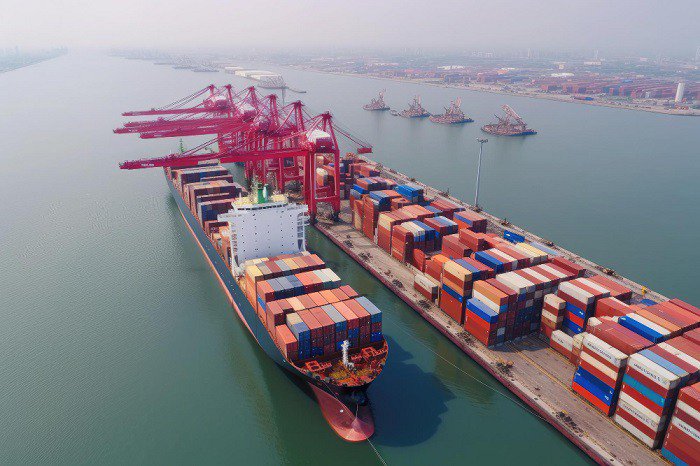
The ocean shipping industry has long been an important component of global trade, allowing goods to be transported over long distances. Traditional ocean freight shipping practices, on the other hand, have frequently been plagued by inefficiencies, high costs, and a lack of transparency. A wave of start-ups has emerged in recent years, bringing new perspectives, innovative technologies, and disruptive business models to the table.
These start-ups offer technologies ranging from robotics to machine learning, artificial intelligence (AI) to the Internet of things (IoT), and augmented reality to not only help the maritime industry deal with various challenges, but also to help create a safer, more efficient, and productive environment for export and import trade.
This blog investigates how these start-ups are transforming the ocean shipping industry, with a focus on key areas such as sea freight rates, ocean freight tracking, and container freight shipping.
6 Ways Start-Ups are Helping Reinvent Ocean Shipping Industry
Challenging Traditional Models
Large shipping conglomerates have traditionally dominated the ocean shipping industry, with complex networks, opaque pricing structures, and limited visibility. Startups are challenging the status quo by introducing transparency, efficiency, and cost-effectiveness.
Ocean freight rates are one source of disruption. Startups are leveraging technology to provide real-time market data and dynamic pricing algorithms, allowing shippers to access competitive rates based on demand and supply fluctuations. This enables companies of all sizes to make informed decisions and reduce shipping costs.
Tracking and Visibility
Ocean freight tracking is another critical area where start-ups are making inroads. Tracking cargo in transit has traditionally been a time-consuming and error-prone process. Startups are leveraging emerging technologies such as Internet of Things (IoT), blockchain, and data analytics to provide shippers with end-to-end visibility and real-time updates.
These cutting-edge solutions provide precise information about the location, condition, and estimated arrival times of containers. Start-ups help businesses optimize their supply chain operations, reduce delays, and increase customer satisfaction by increasing transparency.
Streamlining Operations and Efficiency
In the ocean shipping industry, start-ups are also streamlining operations, eliminating redundancies and improving overall efficiency. They are creating digital platforms that connect shippers, carriers, and other stakeholders, making the booking, documentation, and customs clearance processes easier.
These platforms allow for seamless collaboration, the automation of manual tasks, and the reduction of paperwork, all of which save time and money. Start-ups foster a collaborative ecosystem that drives operational excellence by bringing diverse parties onto a single platform.
Sustainable Shipping Solutions
As environmental concerns gain prominence, start-ups are actively addressing the ocean shipping industry's sustainability challenges. They are researching environmentally friendly alternatives to conventional fuel, such as LNG-powered vessels, as well as innovative propulsion technologies.
Furthermore, start-ups are promoting container optimization, efficient port operations, and innovative packaging solutions in order to reduce carbon emissions and environmental impact. By providing sustainable shipping options, these start-ups are not only meeting regulatory requirements, but also catering to the growing demand for environmentally conscious shipping practices.
Hull inspection via Robotics
The hull is the most vulnerable part of the ship to the elements and thus the most important. When the ship sails, unwanted sea life accumulates on the hull. This not only slows the vessel's speed, but also consumes more fuel, resulting in higher costs and increased carbon emissions. As a result, it must be inspected on a regular basis. However, doing so is a hazardous, difficult, and time-consuming task. Human divers have traditionally worked while the ship is moored or docked.
"Underwater inspection of ship hulls is a cost-effective alternative to drydocking or diver inspections." EyeROV TUNA, our Remotely Operated Vehicle ROV, is used to perform safe and efficient hull inspections. The piloted tethered submersible vehicles (which are controlled from the control station via a tether) are a time-consuming alternative to diver-based inspections or drydocking. The system is linked to a laptop, and data can be easily retrieved from it.
Digitizing procurement of supplies
Obtaining ship supplies and consumables used to be a time-consuming and tedious process for seafarers. The Enterprise Resource Planning (ERP) softwares used were complex and manual, necessitating the use of excel sheets or PDF files to create requisitions and purchase orders. Because there were no catalogues, it was necessary to mention brand names and attach images. There were also concerns about product quality.
However, with the emergence of start-ups such as Shipskart, the procurement scene is rapidly changing. The process has been streamlined, and seafarers and shipowners can now order supplies with a single click and have them delivered to the shore as soon as possible.
Conclusion
As a result of the disruptive influence of start-ups, the ocean shipping industry is undergoing profound transformation. These forward-thinking companies are helping to reinvent the industry by challenging traditional models, providing transparency, streamlining operations, and focusing on sustainability.
The introduction of dynamic pricing algorithms, enhanced tracking capabilities, and collaborative digital platforms enables shippers to make more informed decisions, reduce costs, and improve overall efficiency. Start-ups will play a critical role in shaping the future of ocean shipping as the industry evolves, ushering in a new era of transparency, sustainability, and customer-centric practices.





 Get instant quote
and compare offers in real time
Get instant quote
and compare offers in real time